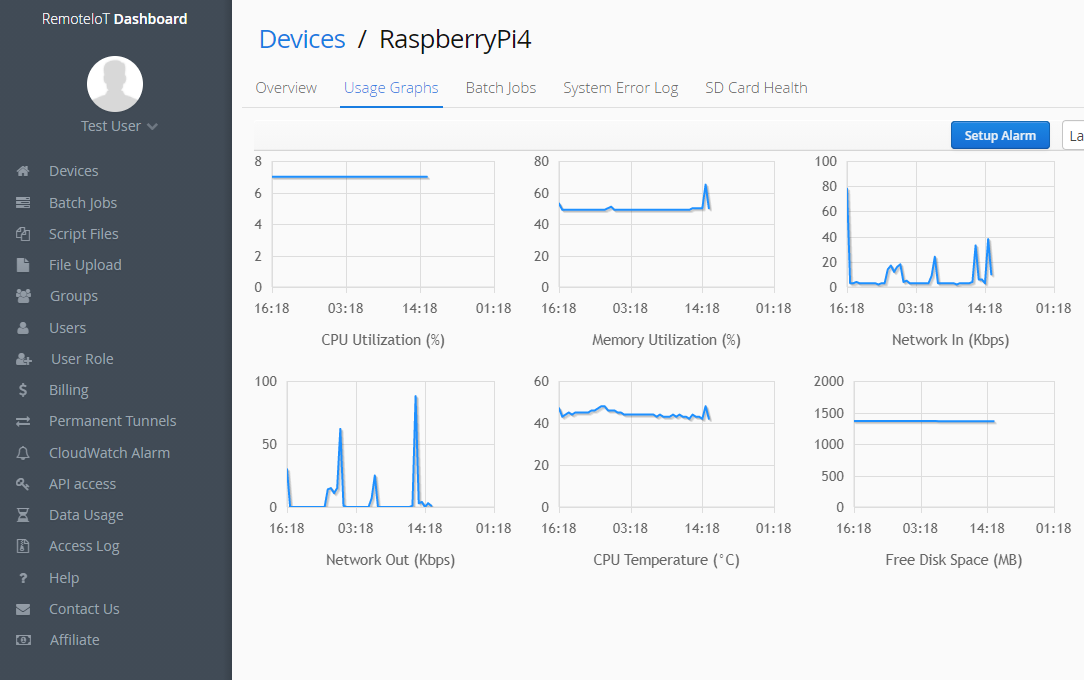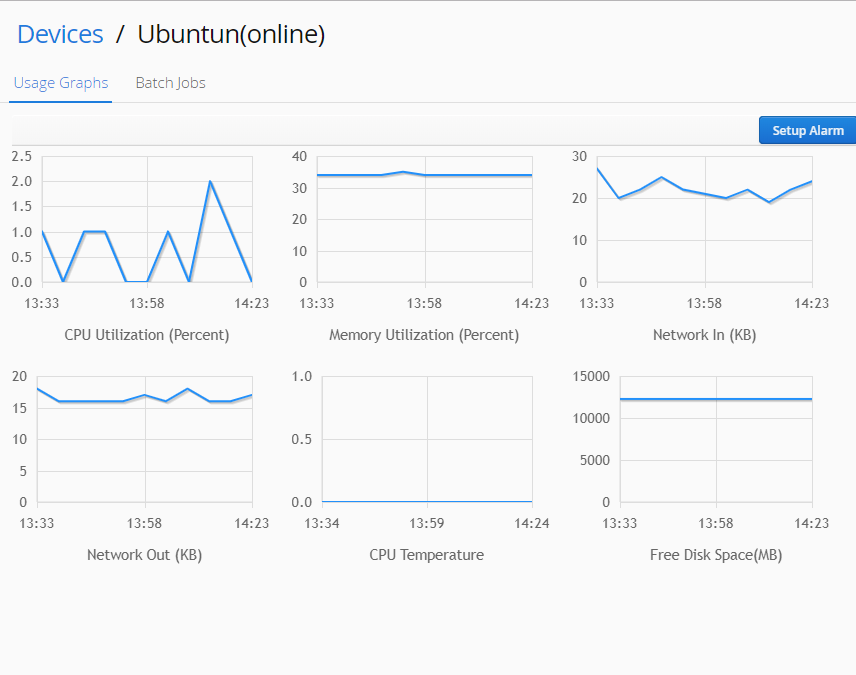
Entering assigned compact device externally proves to be extremely handy, however the process besides introduces latent preservation challenges. To alleviate current problems, implementing proper network shields and knowing how Network Address Translation (NAT) works is important. A firewall acts as a defense between your Pi and the outside world, enabling you to control incoming and outgoing traffic based on predefined rules. By configuring your firewall to only grant trusted connections, you can significantly amplify the security of your device.
Network Address Translation devices are another important element in remote access security. They attribute private IP addresses to devices within your network and present a single public IP address to the outside world. This process helps to shield the internal network structure, making it trickier for attackers to pinpoint individual devices. By employing both firewalls and NAT routers, you can create a secure and robust remote access solution for your Raspberry Pi.
Connecting IoT Devices from Anywhere the Firewall
The environment of Internet of Things (IoT) offers exceptional opportunities for coordination, but it also presents unique challenges. One key question is securely interfacing with these devices from any locations. Traditional firewalls, designed to protect systems from external threats, often obstruct access to IoT endpoints, restraining the full potential of connected gadgets. To overcome this difficulty, innovative solutions are emerging.
- Remote platforms allow for authorized access to IoT devices, enabling users to observe them from anywhere with an internet link.
- Virtual Private Network strategies create a protected tunnel between the user's device and the IoT network, safeguarding data during transfer.
- Strict Access protocols enforce strict access controls, corroborating the identity of users before granting them access to specific devices.
By embracing these methods, organizations can unlock the full benefits of IoT while ensuring the integrity of their valuable data and systems.
Overcoming Barriers: Linking to Raspberry Pis Behind Network Address Translation (NAT)
Network Address Translation (NAT) can sometimes pose a hurdle when trying to access your Raspberry Pi from outside your local network. While NAT effectively masks private IP addresses, it can make direct connections problematic. Fortunately, there are several solutions to bridge this gap and enable seamless remote access to your Raspberry Pis.
- One common approach is to utilize a Dynamic DNS service, which provides a static hostname for your Pi that updates automatically even when its IP address changes.
- Another option is to set up port forwarding on your router, allowing specific ports on your Raspberry Pi to be transferred to public IP addresses. This method requires careful configuration and understanding of network protocols.
- For more secure access, consider implementing a VPN (Virtual Private Network). A VPN encrypts your connection and routes it through a protected server, masking your real IP address and providing an extra layer of protection.
By exploring these strategies and selecting the most appropriate solution for your needs, you can effectively bridge the gap created by NAT and gain reliable remote access to your Raspberry Pis, unlocking their full potential from anywhere with an internet connection.
Managing IoT Devices Remotely Past Firewall Barriers
Remote access toward IoT devices commonly be a challenge when dealing with firewalls. These security measures formulated to protect your network can sometimes restrict your ability to control your networked devices from afar. However, knowing the principles behind firewall operation and implementing tailored configurations can open a secure pathway for remote administration.
One common approach is to build port forwarding rules. This calls for redirecting specific IP addresses and ports to your IoT device, effectively constructing a direct connection. Another method adopts VPNs (Virtual Private Networks). By constructing a secure tunnel between your device and the network where your IoT device resides, you can evade firewall restrictions and gain access to your devices remotely. It's crucial to remember that implementing these solutions necessitates a thorough understanding of your network infrastructure and security protocols to secure the integrity and safety of your system.
- Implement strong passwords for your router and IoT devices.
- Consistently update firmware on your router and IoT devices to correct security vulnerabilities.
- Disable any unnecessary services or ports on your router.
Accessing Firewalls for Remote Raspberry Pi Management
Remotely handling your Raspberry Pi proves to be be a powerful way to deploy its capabilities. However, firewalls are crucial for securing the security of your device. Properly arranging firewall rules allows you to limit incoming and outgoing network traffic, impeding unauthorized linkages. Understanding how to navigate these settings is vital for protecting the integrity of your Raspberry Pi.
- Apply a firewall software solution designed for Raspberry Pi. Numerous versions are available, each with its own set of features.
- Set clear rules that describe which ports should be open and which should remain locked.
- Analyze the use of a VPN for an extra layer of security when accessing remotely.
Bear in mind that firewall parameters are required to be fitted to your specific criteria.
Comprehensive Guide to IoT Remote Access and NAT
Effectively regulating your Internet of Things (IoT) devices from a remote location presents unique challenges. NAT (Network Address Translation), commonly used in home and small office networks, can complicate this process. This guide will delve into the essential steps to securely access and manage your IoT devices behind a NAT firewall.
- ,To begin with, establish a secure connection between your remote device and your local network using a reliable VPN protocol like OpenVPN or WireGuard.
- Secondly, configure port forwarding rules on your router to allow incoming requests to the specific ports used by your IoT devices. Ensure you only forward traffic to the required ports and use strong passwords for authentication.
- In conclusion, consider implementing multi-factor authentication (MFA) for added security when accessing your IoT devices remotely. MFA adds an extra layer of protection by requiring multiple forms of verification, such as a password and a unique code sent to your phone.
By applying these best practices, you can safely and securely operate your IoT devices from anywhere with an internet connection.
Locking down Remote Access to Your Raspberry Pi
Planning to handle your Raspberry Pi without physical presence? A firewall is essential for safely enabling remote access. It acts as a gatekeeper, blocking unauthorized network attempts while allowing permitted requests through. By implementing proper firewall configurations, you can ensure your Pi remains secure even when accessed remotely.
Begin by identifying the services you need to expose externally. Remote Desktop are common examples. Configure your firewall to enable inbound connections on the specific ports used by these services. Remember, a well-configured firewall will only open the necessary doors, reducing potential vulnerabilities.
- Utilize a robust firewall software package designed for Raspberry Pi, such as UFW or iptables.
- Deploy strong passwords for your remote access accounts.
- Repeatedly review and update your firewall rules to address any changes in your setup.
Log into Remotely to Raspberry Pis Through Firewalls and NAT Routers
Securing your Raspberry Pi within a network environment often involves traversing firewalls and Network Address Translation (NAT) routers. This can seem daunting in the beginning, but understanding these components is crucial for safely connecting to your device from afar. This guide provides an in-depth walkthrough of common strategies for remote access, empowering you to control with your Raspberry Pi effectively regardless of its physical location.
We'll delve into the fundamentals of firewalls and NAT, outlining their roles in network security. Then, we'll explore various solutions for establishing secure connections, including SSH tunneling, VPNs, and port forwarding. Besides, we'll provide practical steps and examples to help you implement these techniques on your own setup.
By mastering the art of remote access, you can unlock a world of possibilities for your Raspberry Pi projects, enabling you to monitor performance, repair issues, and even control your devices remotely.
Protected Remote Access for Your Raspberry Pi
Planning to log into your Raspberry Pi from afar? Follow these instructions to set up secure remote access. First, find a suitable protocol like SSH or VNC. Next, activate the necessary software on your Pi. Establish a strong password and enable two-factor authentication for added security. Then, redirect the required ports on your router to your Pi's IP address. Finally, test your connection from a remote device.
- guarding vulnerabilities. To minimize guarding difficulties. To minimize guarding difficulties. To minimize guarding vulnerabilities. To reduce
- Deploy firewalls to protect your Raspberry Pi. defense risks. To curtail protection challenges. To diminish security difficulties. To Remotely access raspberry pi behind firewall or nat router windows minimize preservation hazards. To alleviate
- Upgrade your software up-to-date to patch vulnerabilities.
- Review your system logs for suspicious activity.
From Home Network to the World: Remotely Controlling Your Raspberry Pi Across Firewalls
Your microcontroller board can be much more than just a local project. With the right setup, you can control it from anywhere in the world, regardless of firewalls or distance. This opens up a universe of possibilities - managing your home automation, accessing data remotely, or even running online services directly from your Pi.
While this may seem daunting at first, setting up remote access for your Raspberry Pi is surprisingly straightforward. You'll need to configure your network settings, set up a secure connection, and choose the right tools for controlling your device remotely. Here are some major factors to get you started:
* First, ensure your home network is configured properly. This includes setting up port forwarding rules to allow access to your Pi from outside your local network.* Next, choose a secure connection protocol like SSH or VPN. These protocols encrypt your communications and protect your data from intrusion.* Finally, select a remote control tool that suits your needs. Popular options include VNC for graphical access, SSH clients for text-based interaction, and cloud-based platforms for simplified management.
Once you've taken these steps, you can enjoy the freedom of controlling your Raspberry Pi from anywhere with an internet connection. This opens up a world of possibilities for learning, experimenting, and building impressive projects.
Interfacing IoT Devices Beyond the Local Network: Firewalls and NAT
Extending the reach of Internet of Things (IoT) devices away from the confines of your local network requires careful consideration of security mechanisms. Firewalls serve as crucial defenses, meticulously scrutinizing incoming and outgoing traffic to curb potential threats. Network Address Translation (NAT), on the other hand, allows multiple devices on a private network to share a single public IP address, boosting network efficiency and safeguarding internal locations.
By implementing robust firewall configurations and employing NAT effectively, you can create a secure and organized environment for your IoT ecosystem to thrive. This combination of approaches ensures that your devices can securely interact with the wider internet while being protected from malicious actors.
- Integrate comprehensive firewall rules to allow only trusted traffic.
- Apply NAT to mask internal device addresses.
- Observe network activity for any suspicious behavior.
